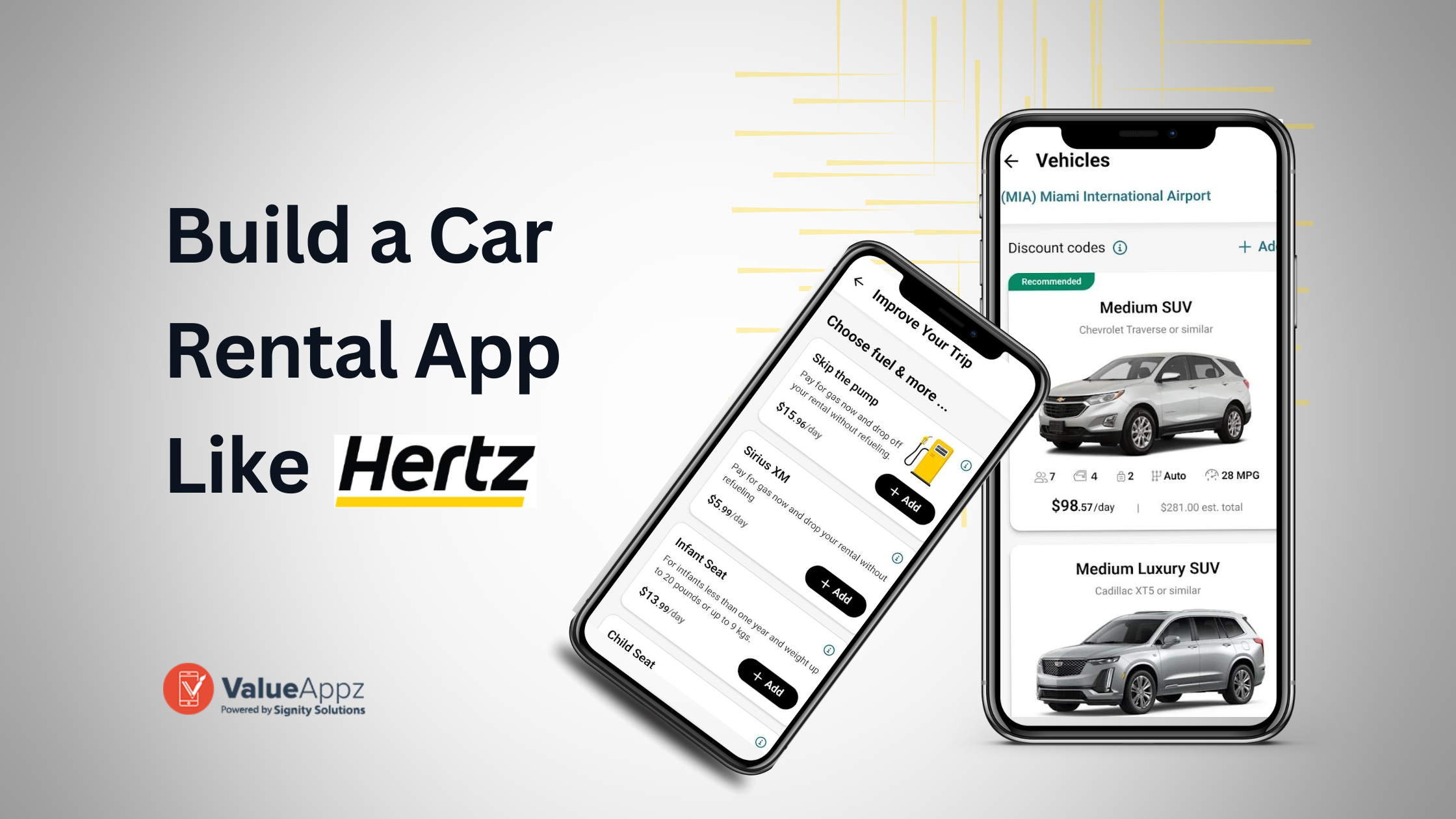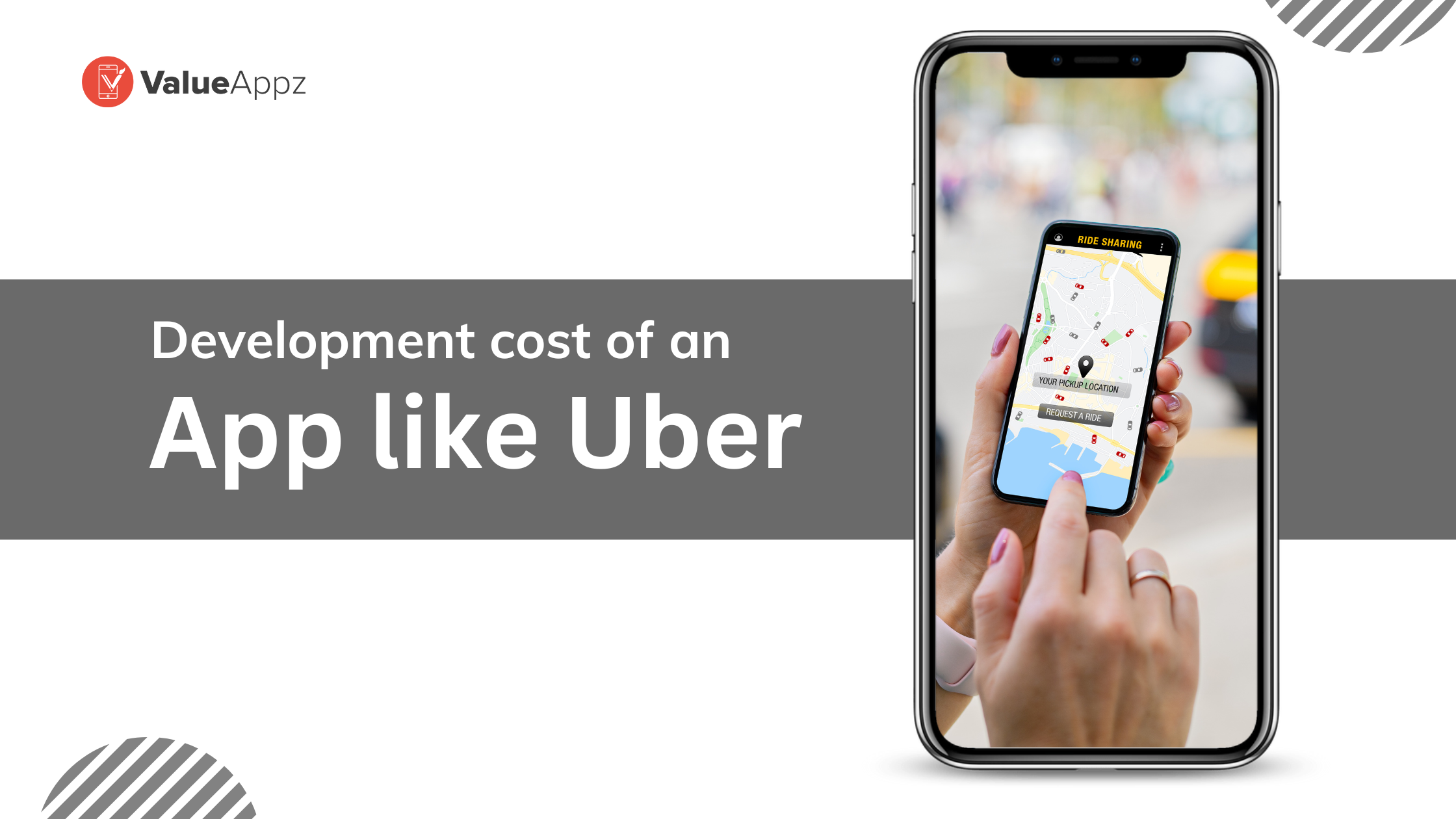The Uber Success Story: From Idea to An $80 Billion Valuation
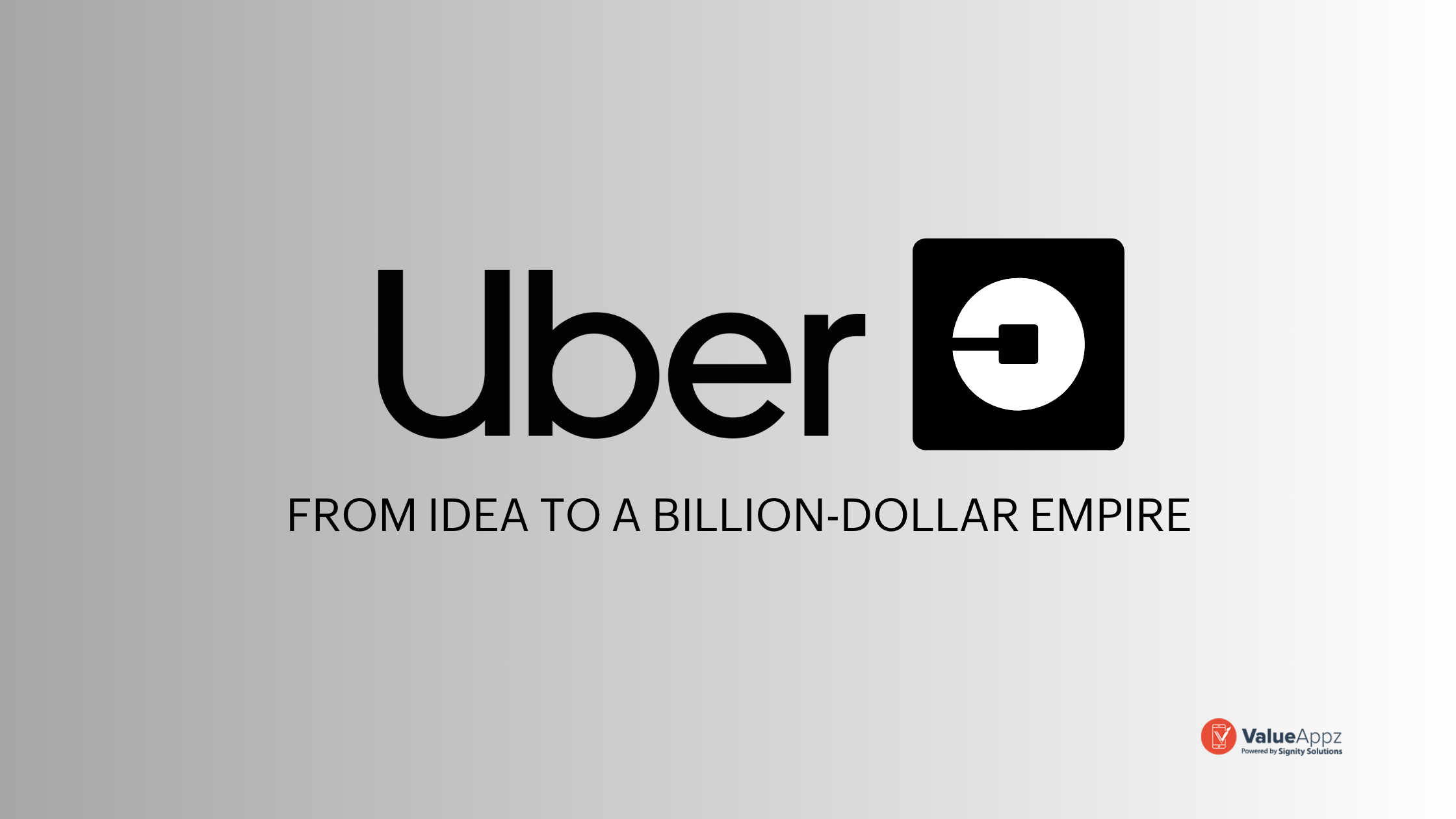
Quick Summary: Uber- initially known for its taxi booking services, has expanded to on-demand food delivery, freight, and much more. The brand is now recognized globally and is on continuous growth towards attracting more customers and revenue. Read the blog to know the Uber success story and what makes this brand so lovable.
When we think about the online taxi industry, Uber is the first name that comes to mind. With its perfect solution to the much-needed target audience at the right time, Uber has been able to disrupt the taxi industry and rule the market.
The idea of Uber was developed from the owner’s personal experience when they faced difficulty finding a cab. Since its launch, Uber has constantly improved its services to ensure that it can deliver the best experience to all types of customers. From the target audience in wheelchairs to those who want to travel with their pets and babies, Uber cabs are designed for all.
If you are considering taxi booking app development like Uber and are planning to enter the ride-hailing market, this blog is a must read. Explore when was Uber founded, where did Uber start, its success story, and how did Uber grow.
Table of Contents
Numbers that Prove the Uber Success
Uber is, without a doubt, one of the leading on-demand brands in the world. From essential taxis to supreme cabs, freight, and food delivery, Uber has proven its services and worth over time. Some interesting stats about Uber:
- Uber alone has about 72% of the ride-hailing industry market share.
- As of 2022, over 64 billion trips were completed by Uber across the world.
- Its active monthly users increased to 130 million in 2023.
- In early 2023, 5.4 million drivers were working with the Uber brand.
- Uber’s mobility segment became the key driver of revenue in 2022, after suffering heavily from lockdowns in 2020 and 2021.
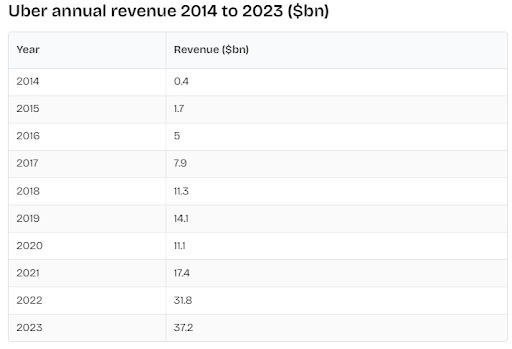
Uber has seen a continuous growth in its revenue for the past three years. In 2023, Uber saw a revenue of 37.2 billion dollars.
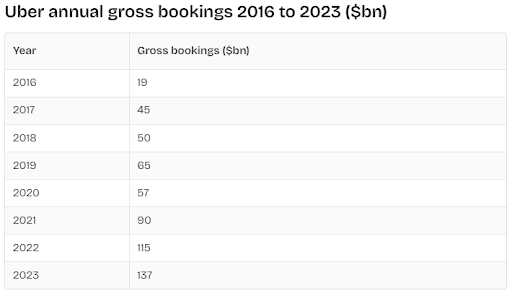
Another report shows that Uber had a gross booking of 137 billion dollars in 2023, and this was a 19% increase year-on-year.
The numbers and graphs above show that Uber has been tough competition ever since it was launched in the market. From winning the hearts of its customers to delivering reliable and safe services, Uber is a leading brand.
Uber- A Complete Overview of the Leading Taxi Booking App
Let’s take a closer look at Uber, the innovative ride-booking app that has transformed transportation all around the world. In this comprehensive overview, we will answer some of the most common questions about Uber.
How Did Uber Start?
Garrett Camp and Travis Kalanick founded the ride-hailing app Uber in 2009. Camp became frustrated trying to hail a taxi in Paris, which gave birth to the idea of Uber. They had an idea for a business that would let customers easily request a ride through a smartphone app.
The beta version of the software was introduced in San Francisco in 2010 under the name Uber Cab. Uber began offering its services in major cities all over the world as it grew, transforming the transportation sector.
Uber’s user-friendly software, affordable prices, and capacity to offer practical transportation options at the touch of a button all contribute to the company’s success. Since then, the business has increased the scope of its offerings to include more than just car rides, including food delivery and package delivery.
| Aspect | Information |
|---|---|
| Company name | Uber Technologies Inc. |
| Founded | March 2009 |
| Founders | Travis Kalanick and Garrett Camp |
| Headquarters | San Francisco, California, USA |
| Services | Ride-sharing, food delivery, freight, and more |
| Uber app launch | 2010 (San Francisco) |
| Global presence | Over 71 countries |
| Business model | Commission-based model (Takes a percentage of fares) |
Who Owns Uber?
CEO of Uber: Dara Khosrowshahi became the CEO of Uber on 30 August 2017.
Uber is a publicly traded company and is owned by its shareholders. These shareholders include individuals and institutional investors who have purchased Uber’s shares on stock exchanges. Uber’s ownership can change over time as investors buy and sell shares in the open market.
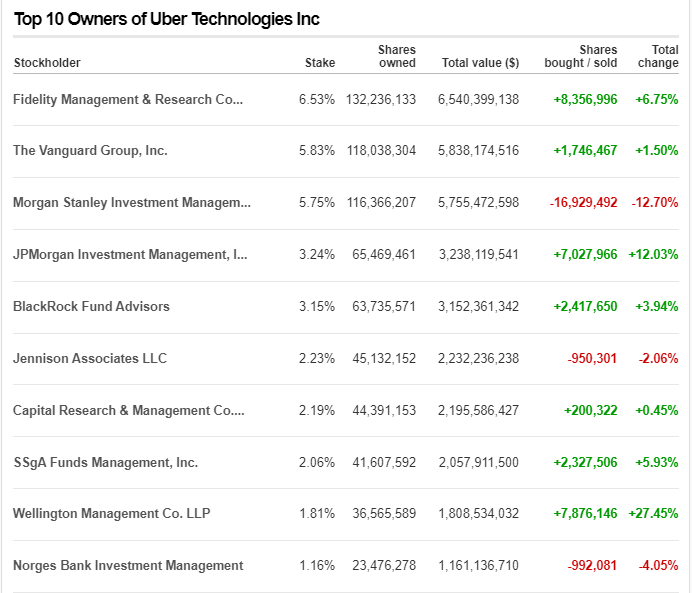
When did Uber Become Popular?
When Uber started to swiftly grow from its headquarters in San Francisco to other significant cities worldwide in the early 2010s, it rose to fame. Users could hail a private driver with just a few taps using the company’s app-based service, viewed as a practical and reasonably priced substitute for taxis. Aggressive marketing activities that helped spread the word about the company also benefited Uber.
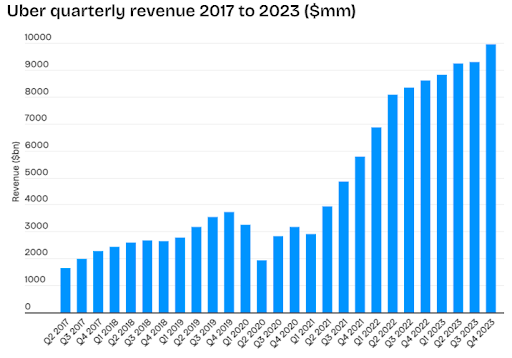
Uber had become one of the most valuable startups in the world by 2014 and was a well-known brand. The company’s unique technology, convenience, and affordable costs have all been cited as contributing causes to its success. However, Uber has also come under fire due to its aggressive business methods and effects on the taxi sector.
Despite the criticism, Uber is still a well-liked and prosperous business. Its services are now available in over 71 countries and over 10,000 cities.
When did Uber go Public?
On May 9, 2019, Uber went public. The business listed its shares in an initial public offering (IPO) on the NYSE, where it began trading with the ticker “UBER.” As Uber switched from being a privately held business to a publicly traded one, the IPO represented a critical turning point for the firm.
This action allowed common people and institutional investors to acquire and sell Uber shares on the open market. It is crucial to remember that Uber’s status as a publicly traded business might potentially impact several areas of its operations and openness since it will be subject to more regulatory regulations and public and shareholder scrutiny.
Uber History Timeline
- 2008
- Garrett Camp and Travis Kalanick met at LeWeb, a tech conference in Paris.
- 2009
- Camp and Kalanick began developing the idea for UberCab, a ride-hailing app.
- 2010
- UberCab was founded in San Francisco.
- The company launched a beta version of its Uber app.
- UberCab raised $1.25 million in funding from First Round Capital.
- 2011
- UberCab changed its name to Uber.
- The company expanded to New York City, Seattle, Boston, Chicago, and Washington, D.C.
- Uber raised $11 million in funding from Benchmark.
- Uber launched UberX, a lower-cost service that used regular cars instead of luxury cars.
- 2012
- Uber expanded to Europe, Asia, and Latin America.
- Uber raised $37 million in funding from Menlo Ventures, Jeff Bezos, and Goldman Sachs.
- Uber launched UberPool, a carpooling service.
- 2013
- Uber expanded to over 100 cities.
- Uber raised $258 million in funding from TPG Capital and Andreessen Horowitz.
- Uber launched Uber Eats, a food delivery service.
- 2014
- Uber expanded to China.
- Uber raised $1.2 billion in funding from investors led by General Motors.
- Uber launched UberRush, a same-day delivery service.
- 2015
- Uber faced regulatory challenges in some countries, including bans on its operations.
- Uber was criticized for its safety record, and some high-profile incidents involved Uber drivers.
- Uber raised $680 million in funding from a group of investors led by Fidelity Investments.
- 2016
- Uber sold its operations in China to DiDi Chuxing in exchange for an 18% stake in DiDi.
- Uber acquired Otto Motto, a self-driving truck company.
- Uber raised $3.5 billion in funding from a group of investors led by Alphabet Inc.
- 2017
- Uber faced a number of lawsuits and investigations, including allegations of sexual harassment and discrimination.
- Uber fired its CEO, Travis Kalanick, and replaced him with Dara Khosrowshahi.
- Uber launched Uber Freight, a service that connects shippers with truck drivers.
- 2018
- Uber continued to face regulatory challenges and lawsuits.
- Uber raised $1 billion in funding from a group of investors led by SoftBank Group.
- Uber launched Uber Elevate, a flying taxi service.
- 2019
- Uber went public and was also listed on the New York Stock Exchange.
- Uber’s stock price fell sharply after the company reported disappointing earnings.
- Uber faced a number of protests from Uber drivers who were unhappy with the company’s low pay and working conditions.
- 2020
- Uber’s business was disrupted by the COVID-19 pandemic.
- Uber laid off thousands of employees and cut costs.
- Uber launched Uber Essentials, a subscription service that offered discounted rides and other benefits.
- 2021
- Uber’s business recovered somewhat as the COVID-19 pandemic subsided.
- Uber launched a number of new features, including Uber Travel and Uber Charter.
- Uber’s stock price began to recover.
- 2022
- Uber faced new regulatory challenges in some countries, including the United States.
- Uber acquired Careem, a ride-hailing company in the Middle East and North Africa.
- Uber’s stock price continued to recover.
- 2023
- Uber’s business continues to grow, but it faces a number of challenges, including rising inflation and competition from other ride-hailing companies.
- Uber’s stock price remains volatile.
Uber Business Model: Understand How the Platform Works
What started as a taxi booking service, Uber now provides several other services across various countries. Let’s look at all Uber services that help the target audience get quick solutions.
1. Uber Taxi
Uber taxi services are known for their ease of use, reliability, and competitive pricing. It eliminates the need for traditional taxi hailing by connecting riders with freelance drivers. With Uber, users can request a ride using the app and find a nearby driver to pick them up and drop them to their desired location.
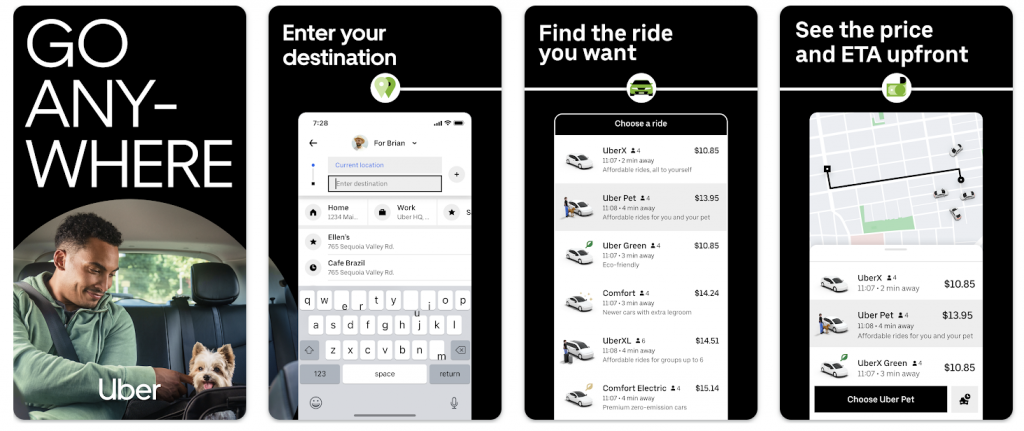
As of early 2023, Uber Taxi’s monthly users had grown to 130 million. In its first quarter of 2023, Uber generated gross bookings of 31.41 billion USD.
To ensure that the Uber taxi booking services are the perfect solution for all its users, it provides a variety of taxi booking options. It includes:
- UberX: The most affordable option, typically with a sedan or hatchback vehicle.
- Uber XL: A larger option that can accommodate more passengers, often with SUVs or minivans.
- Uber Black: An upscale service with professional drivers and luxury vehicles.
- Uber Select: A premium option with newer and more stylish cars.
- Uber Comfort: Offers extra legroom and newer cars.
- UberPool: Allows riders to share rides with others traveling in the same direction, making it a cost-effective choice.
- Uber SUV: A high-end option with larger SUVs.
- Uber Assist: Designed for riders needing extra assistance or accessibility features.
- Uber WAV: Offers wheelchair-accessible vehicles.
Want to build your own taxi booking app like Uber? Check: How Much Does It Cost to Develop an App Like Uber? A Quick Guide.
2. Uber Eats
Uber Eats was launched in 2014. First known as UberFRESH, the name was changed to Uber Eats in 2015. Its services are available in more than 45 countries. Users of the Uber Eats app or website can browse a range of cuisines, eateries, and menu items offered nearby. After a user places an order, Uber Eats matches them with a delivery partner who collects the order from the restaurant and delivers it to the customer’s designated address.
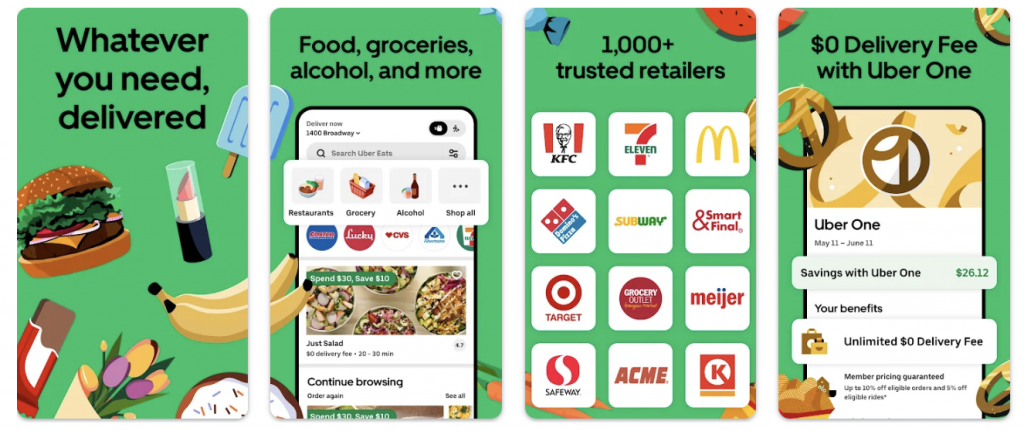
The services got so popular that in 2022, Uber Eats generated $10.9 billion, a 31% year-on-year increase. Also, its gross bookings crossed $55 billion in the same year.
Through the business model of Uber Eats is different and its platform provides benefits to both users and restaurants. On the one hand, users enjoy their favorite meal; on the other hand, restaurants can reach a broader target audience and expand their customer base.
Top Features of Uber Eats Include:
- Food delivery from local restaurants
- Wide range of cuisine options
- Track your order in real-time
- Contactless delivery
- Restaurant ratings and reviews
- Scheduled deliveries
- Uber pass benefits
- In-app payment options
- Promotions and discounts
- Integration with Uber app
Discover more about the Uber Eats business model and how it makes money. Check our comprehensive blog.How to Develop a Taxi Booking App in 2023? (Complete Guide)
3. Uber Freight
Uber Freight connects shippers and carriers to streamline the movement of products. Uber Freight is a digital tool designed specifically for the trucking business that makes it easier to identify, schedule, and manage freight shipments. On the site, shippers can publish their available loads, and carriers can browse and reserve shipments that fit their preferences and available capacity.
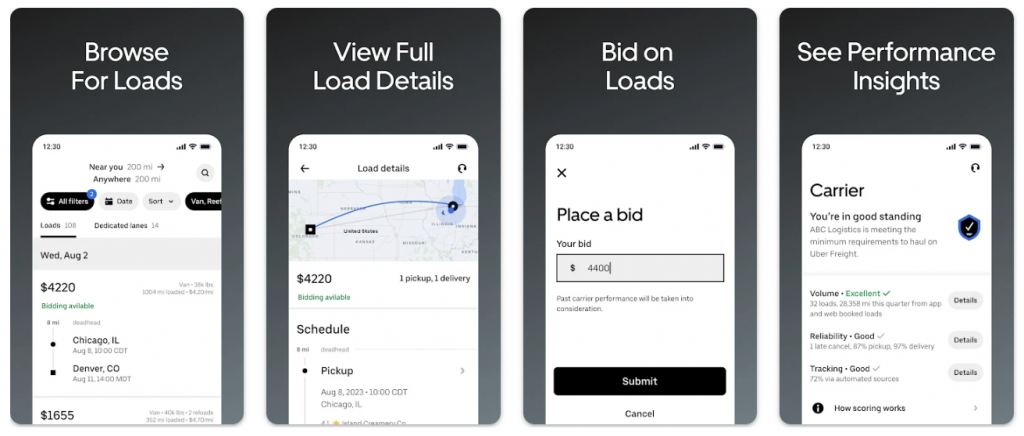
As per the reports, Uber Freight revenue grew 43% year-on-year, and EBITDA grew $17 million year-on-year.
The ability to select the cargoes that best suit their schedules, tools, and business requirements gives carriers a competitive advantage. With upfront pricing, Uber Freight offers transparency, enabling carriers and shippers to bargain for lower rates and monitor shipments in real time.
The Top Features of Uber Freight Include:
- Digital freight marketplace
- Transparent pricing
- Instant booking
- Real-time load tracking
- Access to verified carriers
- Simplified payment process
- Comprehensive shipment details
- 24/7 customer support
- Fleet management tools
- Carrier and shipper ratings
Uber Expansion Strategy: How it Took the Services to a Global Scale?
For a brand to expand globally requires solid and proven strategies to capture the market. Uber went step-by-step to broaden its services across various countries and cities.
- City-centric approach: Rather than launching its services in a complete nation, Uber focused on a city-centric approach. It initially targeted major cities and grabbed the target audience. This approach helped the brand to focus on densely populated areas.
- Local partnerships: Building a local partnership was another excellent strategy for Uber. It formed partnerships with local businesses, governments, and influential individuals to gain better insights into local markets.
- Adaptation to local preferences: To ensure that it meets the needs of audiences across all countries, Uber customized its services to meet local tastes and demands. It included different vehicle types, payment options (e.g., cash payments in regions where it was common), and even food options through Uber Eats to cater to specific local tastes.
- Market research: Uber heavily relied on data analysis to determine markets and assess the demand for its services. It allowed Uber to always make informed decisions in a particular country or city.
- Aggressive marketing: Uber used aggressive marketing to promote its services and attract riders and drivers in new markets. These promotional campaigns included discounted rides and driver incentives.
- Acquisitions and mergers: In some cases, like Craeem and Autocab, Uber acquired or merged with local competitors to consolidate its position in new markets. This strategy allowed for quick market dominance.
Uber Revenue Models: How Does the Brand Make Billions of Revenue?
How does Uber make so much money? Well, it follows several revenue models to earn revenue. Some of its revenue models include:
1. Commission on Trips
Uber makes money by taking a portion of the fare charged for each ride in the form of commission on trips. Uber charges about 20% of the overall fare, with the remaining sum going to the driver who provided the transportation. Using a commission-based business model, Uber can profit directly from the transactions on its platform. This strategy pushes the company to facilitate more journeys through its app to raise revenue.
2. Surge Pricing
Uber uses surge pricing, which dynamically raises ride prices during high demand, to generate revenue. The Uber app automatically increases costs to encourage more drivers to become available in the region when there is a spike in ride requests, balancing supply and demand. Uber receives the additional money customers pay during surge pricing as revenue, giving them a temporary increase in income at busy times or events.
3. Cancellation Fee
Another way that Uber earns revenue is through cancellation fees. When riders cancel their rides after a specific time, they are charged a particular amount based on the ride fare as a cancellation fee. This money goes directly to Uber.
4. Delivery Fee
On-demand food delivery through Uber Eats is another primary source of Uber revenue. For every order placed, a particular amount for delivery is charged. This amount is calculated based on several bases, like distance, area, and the demand at that specific time. The app charges about 25% of the delivery fee. So, every time an order is placed, Uber gets to make money from it.
5. Advertising and Promotions
Uber partners with companies and brands to display advertisements, promotions, or sponsored content within its app. These advertisements may feature discounts for Businesses that pay Uber to put and display their advertisements so that they may access a particular location, specials for restaurants on Uber Eats, or sponsored initiatives for the highly interested and targeted audience of Uber app users. Uber’s entire income is boosted by the advertising revenue, which also aids in covering operating expenses.
Launch Your Own Startup: Explore Opportunities with ValueAppz
Do you like the success story of Uber and how it expanded globally with its services? Are you a startup or small business looking to build a similar model? Whether you want to enter the online taxi booking services with an Uber-like app or lead the food delivery industry with an app like Uber Eats, we got you covered.
ValueAppz is an on-demand app development company with over 12 years of experience. Our robust services are designed to provide quick and quality services to our clients. The best part? You will get your app designed and developed in budget. So, what are you waiting for? Get in touch today.
Key Takeaways
- Uber’s innovative approach reshaped transportation, capturing 72% market share and reaching 130 million users.
- With $37.2 billion revenue in 2023 and a global presence in 10,000 cities, Uber’s dominance is evident.
- From 2009 startup to global giant in 71 countries, Uber’s journey is defined by innovation and expansion.
- Uber’s varied income streams, including trip commissions and delivery fees, ensure financial stability and growth.
Frequently Asked Questions
Q1. Why is Uber so successful?
Uber’s marketing strategy played a significant role in making it successful. It enhanced brand awareness and drove more user acquisition. Referral programs were one of the most vital marketing tools.
Q2. Is Uber still Successful?
Yes, Uber is still booming. As of the second quarter of 2023, Uber generated about 35 billion in revenue, with a 37% increase year-over-year.
Q3. Who is Uber’s Founder?
Uber was founded by Garrett Camp, a Canadian entrepreneur, and Travis Kalanick, an American entrepreneur, in 2009.
Q4. When did Uber Become Successful?
Uber became successful and achieved significant growth and global recognition after its launch in San Francisco in 2011, revolutionizing the transportation industry with its innovative ride-sharing model.
Q5. Where did Uber get its Name?
The Wall Street Journal reports, “Uber’s name comes from the German word über, meaning “over, above.”
💡 Editor’s Note: This blog entry was originally published on Sept 07, 2023, and is updated on May 16, 2024.
THE AUTHOR
Harjyot kaur
As a technical content writer my focus is on creating high-quality, engaging, and informative content that simplifies complex technical topics. Throughout my career, I have continuously pursued opportunities for growth and development, refining my skills and expanding my knowledge base.

Get ready to digitally transform your business.
Let our team help take your business to the next level. Contact us today to get started on finding the perfect solutions for your business needs.






